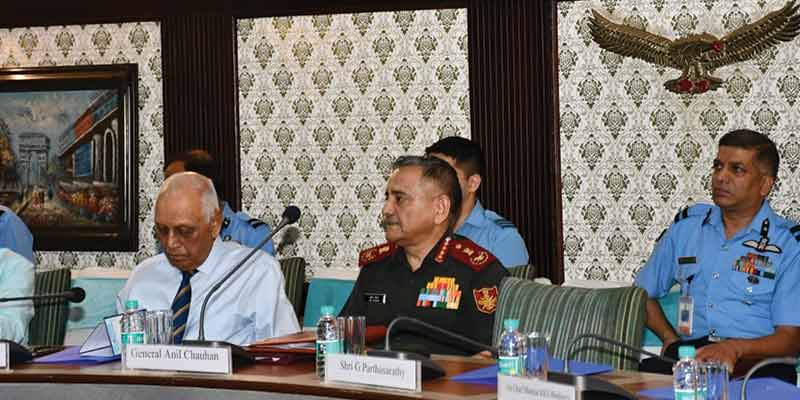- India
- Jun 27
- Kevin Savio Antony
Explainer - India’s ‘no first use’ policy
General Anil Chauhan, Chief of Defence Staff, reaffirmed India’s nuclear strategy based on ‘no first use & massive retaliation’ during a seminar in New Delhi.
He also noted that the threat from nuclear weapons has once again occupied centre-stage in the geopolitical landscape.
No first use policy
• No first use is a policy where a nuclear-armed nation commits not to deploy nuclear weapons unless it is first attacked with them by another state.
• This principle has historically extended to chemical and biological weapons as well.
• Following the success of Pokhran-II in 1998, no first use of nuclear weapons has been India’s basic commitment. However, another major point warns that “any adversary must know that India can and will retaliate with sufficient nuclear weapons to inflict destruction and punishment that the aggressor will find unacceptable if nuclear weapons are used against India and its forces”.
• Pakistan has not espoused a ‘no first use’ policy, citing India’s conventional warfare superiority.
• In 1964, China became the first nation to propose and pledge ‘no first use’ policy when it first gained nuclear capabilities in 1964, stating “not to be the first to use nuclear weapons at any time or under any circumstances”.
When did India declare ‘no first use’ policy?
• The draft report of national security advisory board on Indian nuclear doctrine, which was submitted on August 17, 1999, said “the very existence of offensive doctrine pertaining to the first use of nuclear weapons and the insistence of some nuclear weapons states on the legitimacy of their use even against non-nuclear weapon countries constitute a threat to peace, stability and sovereignty of states”.
• Accordingly, another clause said “the fundamental purpose of Indian nuclear weapons is to deter the use and threat of use of nuclear weapons by any state or entity against India and its forces. India will not be the first to initiate a nuclear strike, but will respond with punitive retaliation should deterrence fail”.
• The Cabinet Committee on Security (CCS) met on January 4, 2003 to review the progress in operationalising of India’s nuclear doctrine.
• The CCS shared information regarding the nuclear doctrine and operational arrangements governing India’s nuclear assets.
According to that document, India’s nuclear doctrine can be summarised as follows:
• Building and maintaining a credible minimum deterrent.
• Nuclear weapons will only be used in retaliation against a nuclear attack on Indian territory or on Indian forces anywhere.
• Nuclear retaliation to a first strike will be massive and designed to inflict unacceptable damage.
• Nuclear retaliatory attacks can only be authorised by the civilian political leadership through the Nuclear Command Authority.
• Non-use of nuclear weapons against non-nuclear weapon states.
• However, in the event of a major attack against India, or Indian forces anywhere, by biological or chemical weapons, India will retain the option of retaliating with nuclear weapons.
• A continuance of strict controls on export of nuclear and missile related materials and technologies, participation in the fissile material cut-off treaty negotiations, and continued observance of the moratorium on nuclear tests.
• Continued commitment to the goal of a nuclear weapon-free world, through global, verifiable and non-discriminatory nuclear disarmament.
Who is responsible for India’s N-programme?
• The Nuclear Command Authority (NCA) of India is the authority responsible for command, control and operational decisions regarding India’s nuclear weapons programme.
• The NCA comprises a political council and an executive council. The political council is chaired by the Prime Minister.
• It is the sole body that can authorise the use of nuclear weapons.
• The executive council is chaired by the national security adviser.
• It provides inputs for decision making by the NCA and executes the directives given to it by the political council.
(The author is a trainer for Civil Services aspirants.)

